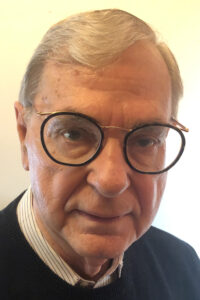Now deep into Ken Burns’ magnificent film on the American national parks, I keep thinking – along with the purely visceral pleasures of viewing some of the most beautiful photography I’ve ever seen – that there is a big, big message here for us knowledge workers. Of course Burns and his team meant for the film to be enlightening as well as entertaining, but as I think about some of our field’s work with the concept of the knowledge culture, I’m wondering if there isn’t a natural link here between what Burns is trying to do and what we’re trying to do.
And I wonder if we shouldn’t take it further. Should we go beyond our stated goal of creating a knowledge culture in the workplace to seeking a knowledge society? Perhaps it would be useful to start thinking about how we can take knowledge development and, especially, knowledge sharing – what we like to call “KD/KS” – out of the workplace into society at large.
It isn’t such a far-fetched idea. One colleague in a country in the Middle East describes how his country’s leadership is seeking to skip quickly over the usual steps to national development from its past to its future (and especially in the country’s educational framework). In their work, the leaders are seeking through a variety of mechanisms and activities to establish that the country exists as and functions as a knowledge society. In fact, the country’s leaders use that very phrase to describe what they are attempting to do.
But how does it all get managed? What steps can we take to enable a knowledge society?
Obviously, since we are so successful with media management here in the United States, we might think about how we use the media. There’s no question but that spectacular presentations like Ken Burns’ current film on television – “The National Parks: America’s Best Idea” – have an impact. And watching it, I would challenge anyone to deny that the knowledge being shared is too “removed” or too “historical” to give us ideas about how to deal with some of the questions challenging our own society. It’s through KD/KS at this level that we become a knowledge society.
How so?
In a recent interview with Doris Drucker, Peter Drucker’s wife of almost 70 years and an amazingly accomplished person in her own right, Mrs. Drucker made it clear that the key to Peter Drucker’s success as a thinker and as a leader had much to do with his skill in listening to what others had to say, And with learning about and understanding history. Even though his own field of expertise was management science his major focus was learning from history, especially from American history. And from hearing what others have to say.
So it is with Ken Burns’ film. And others like it. To hear the facts of history – the photographs, the quotations – and at the same time take in the commentary from the impressively informed people brought in to share with us and for us their knowledge and their personal interpretations of this splendid history.
I’ve commented before about the role of generosity in Drucker’s management teachings. Although not usually characterized as such, it’s clear that a “generous spirit” (as it’s sometimes called) is a critical element in the management process. So it is with building a knowledge culture and as we do so, to move our social framework to its proper function of enabling a knowledge society. Generosity of spirit is the critical essential of the KD/KS process. Perhaps that generosity of spirit can be re-focused – if Ken Burns’ films are any example – into building a knowledge culture and a knowledge society.

I was also thinking about KM while watching this spectacular series – the two key takeaways for me were:
1) It wasn't just the stunning photography and impressive facts (size, wildlife, etc) about our National Parks but the human stories behind them that really made it compelling. We could use more human stories as part of our communication about KM.
2) Every park had passionate champion(s) behind it who could inspire others.